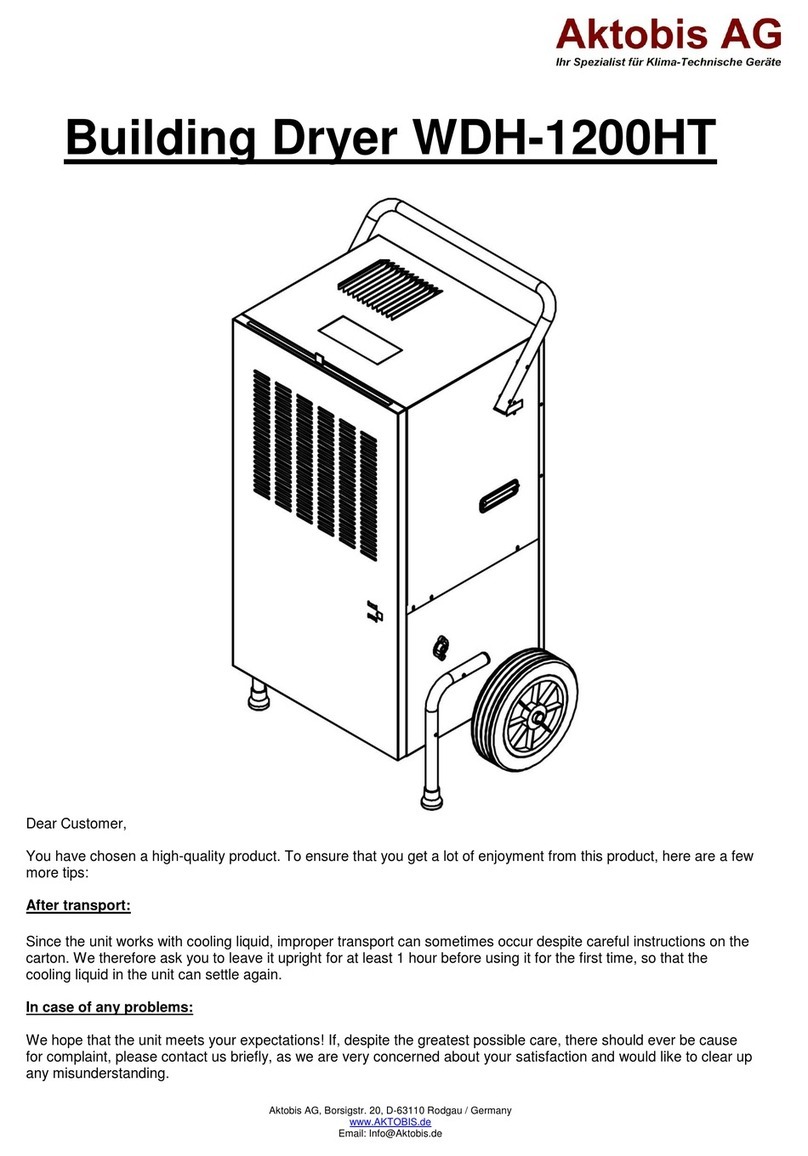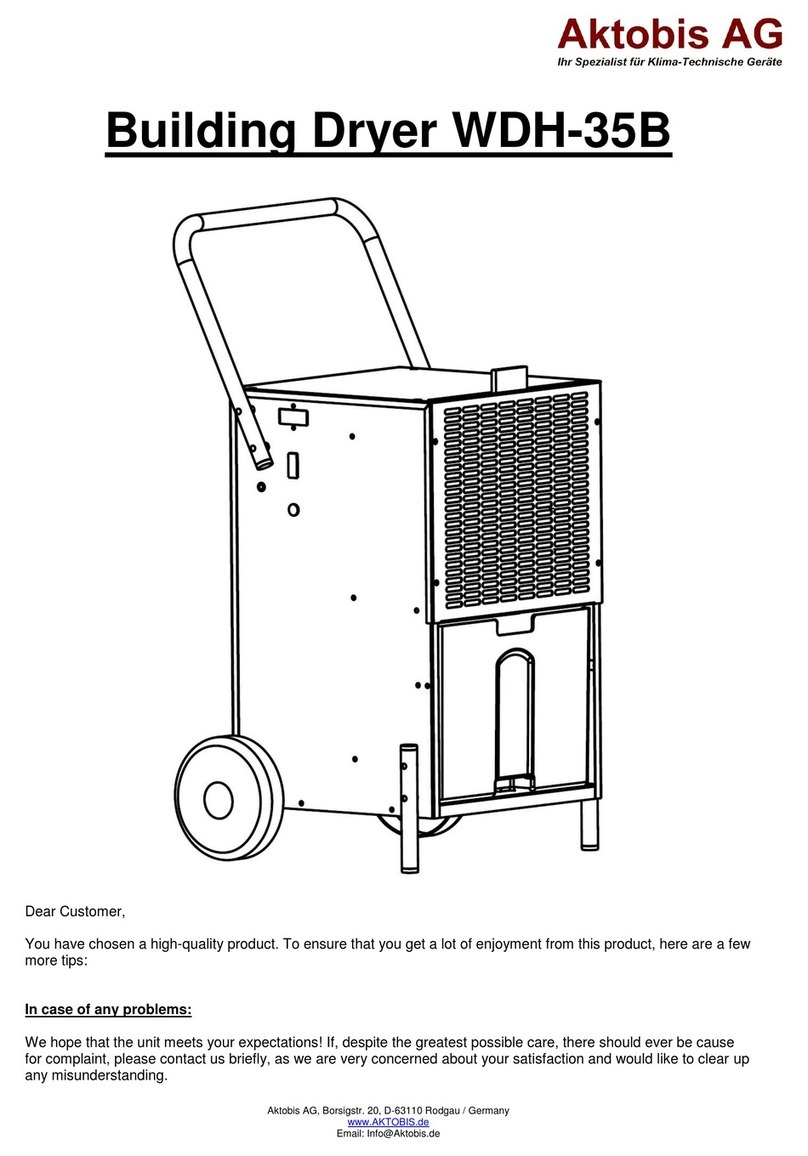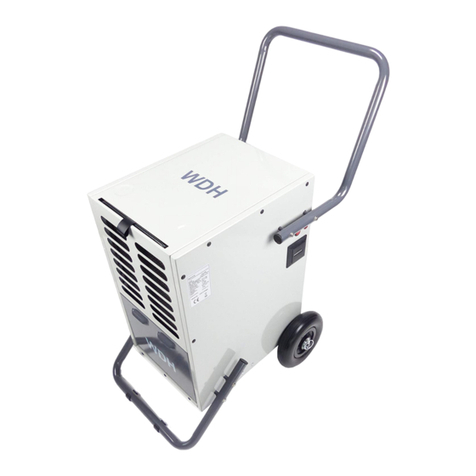Aktobis AG, Borsigstr. 20, D-63110 Rodgau / Germany
www.AKTOBIS.de
Email: info@aktobis.de
5. no ignition sources
Persons carrying out work in connection with a refrigeration system which involves exposure to
pipe work containing or having contained flammable refrigerant must use ignition sources in
such a way that they cannot cause a risk of fire or explosion. All possible sources of ignition,
including cigarette smoking, should be kept sufficiently far away from the place of installation,
repair and disposal, during which the flammable refrigerant may be released into the
surrounding area. Before work, the area around the equipment must be inspected to ensure that
there are no flammable hazards or ignition risks. "No smoking" signs must be erected.
6. ventilated area
Ensure that the work area is outdoors or that it is sufficiently ventilated before intervening in the
system or carrying out hot work. Adequate ventilation must be ensured throughout the duration
of the work to be carried out. Ventilation should safely disperse any released refrigerant and
preferably expel it externally into the atmosphere.
7. testing of the refrigerant equipment
When electrical components are replaced, they must be fit for purpose and of the correct
specification. The manufacturer's guidelines on maintenance and repair must be observed and
followed at all times. If in doubt, contact the manufacturer's technical department for assistance.
The following tests must be applied to installations containing flammable refrigerants:
- The charging quantity is in accordance with the room size within which the refrigerant-
containing parts are installed;
- The ventilation equipment and the ventilation outlets are running properly and are not blocked.
8. testing of the electrical equipment
Before repairing and maintaining electrical components, preliminary safety checks and
inspection procedures must be carried out on the components. If there is a defect which could
endanger safety, the unit must not be connected to the mains until the defect has been rectified.
If the defect cannot be repaired immediately but operation must continue, an adequate
temporary solution must be found. This must be reported to the equipment owner so that all
parties are informed.
The preliminary safety checks shall include:
Capacitors must be discharged; this should be done in a safe manner to avoid the possibility of
sparking.
No live components or wiring should be exposed when filling, restoring or flushing the system.
Continuity of the earth connection.
9. repairs of hermetically sealed components
During repair of hermetically sealed components, all power to the unit must be disconnected
before removing sealed covers, etc. If it is absolutely necessary that power be supplied to the
unit during maintenance, a permanent leak detection system must be in place to warn of a
potentially dangerous situation.
Particular attention must be paid to the following point to ensure that when working on electrical
components, the enclosure is not altered in such a way that the degree of protection is
compromised. This includes damage to cables, an excessive number of connections, terminals
that do not meet the original specification, damage to seals, improper fitting of sealing screws,
etc.
Make sure that the unit is securely mounted.
Make sure that gaskets or sealing material are not so worn that they no longer serve their
purpose in preventing the ingress of flammable atmospheres. Spare parts must be in
accordance with the manufacturer's specifications.































